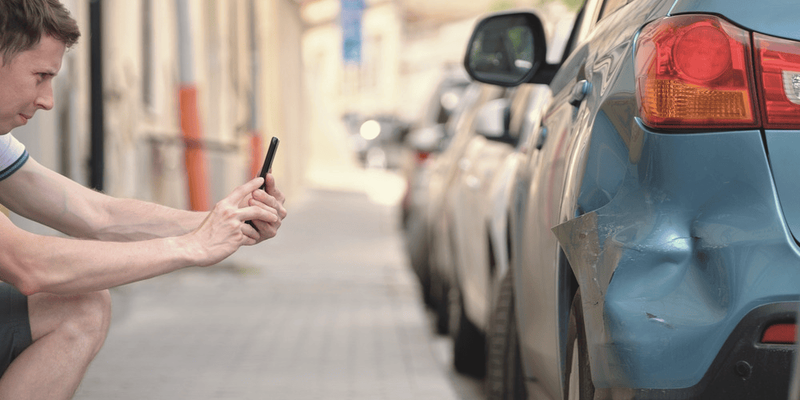
If you are not redirected within 30 seconds, please click here to continue.
Samedi: 10h – 16h HAE

If you are not redirected within 30 seconds, please click here to continue.
If you are not redirected within 30 seconds, please click here to continue.
Should you get a hit-and-run deductible waiver?

Failing to remain at the scene of the accident is a serious offence that can lead to heavy fines, licence suspension, jail, and a criminal record. And yet, it happens more than we like to think.
For instance, out of the 21 collision fatalities that took place in Winnipeg last year, 14% of these were hit-and-run accidents. If you’ve been hit by a car and the offender has fled the scene, what happens next?
If the authorities haven’t found the offender, who covers personal and vehicle damage? Unfortunately, in a hit-and-run scenario, the driver who was hit will typically have to pay their deductible to account for the fact that their insurance company will not be able to track down the insurance company of the person who fled the scene. As a result, it won’t receive any reimbursement for the claim, which is why the victim’s collision deductible applies.
To alleviate the cost of paying out-of-pocket for damage with your insurance company, you could consider a hit-and-run deductible waiver.
What is a hit-and-run deductible waiver?
A hit-and-run deductible waiver is offered as an endorsement by some insurance companies that ensures you don’t have to pay the deductible if you are the victim of a hit-and-run accident.
Hit-and-run damages can be claimed under your collision insurance, which is optional. With collision coverage, you are covered for damage resulting from a collision with another vehicle or stationary object.
“[The] insured [person] can be anywhere from 100% to 0% at-fault,” says Sonja Denobrega, vice president of personal insurance underwriting policy at Aviva Canada. “Your insurance company works to determine the degree to which you are at-fault. For a hit-and-run claim, once it is determined you are not at-fault, your selected collision deductible will apply to the claim.”
For instance, if you have a collision deductible of $1,000, and you are a victim of a hit-and-run accident, having a hit-and-run deductible waiver can ensure you don’t have to pay that $1,000 before your claim is paid out. As long as your policy is paid and up to date, the waiver lasts as long as you continue paying for it.
“There are no limitations in terms of how many times this can be claimed on your policy,” says Denobrega. “Your regular policy limits, like actual cash value, would apply as they would for any collision claim.”
Should you get a hit-and-run deductible waiver?
A hit-and-run deductible waiver is a nominal amount you would pay your insurance company every month as part of your premium. If you are the victim of a hit-and-run accident — where the at-fault driver has not been identified — this waiver would save you from having to pay your collision deductible.
You can consider adding this endorsement to your policy when you opt for collision insurance. It is a worthwhile investment if you own a car that is of high-value or brand-new.
While a hit-and-run accident may be unlikely, it doesn’t hurt to learn about all the options available to you, including a car insurance policy with better coverage and a lower rate.
What should you do if you’re the victim of a hit-and-run accident?
If you are the victim of a hit and run, first, note down all the information you can gather from the scene of the collision, like the licence plate, colour and model of the car, and any identifying information on the at-fault driver.
Take pictures of the damage done to your vehicle, like dents or abrasions. If there are any witnesses to the accident, be sure to take down their contact information and details, too. All this information should be shared with your insurance company. In Ontario, you will have to file a claim within seven days of the accident.
You should also be reporting the accident to the police within 24 hours of its occurrence.
Interested in creating content with Rates.ca? Reach us at email@rates.ca.
Don't waste time calling around for auto insurance
Use Rates.ca to shop around, and compare multiple quotes at the same time.
Latest Articles
Get money-saving tips in your inbox.
Stay on top of personal finance tips from our money experts!










